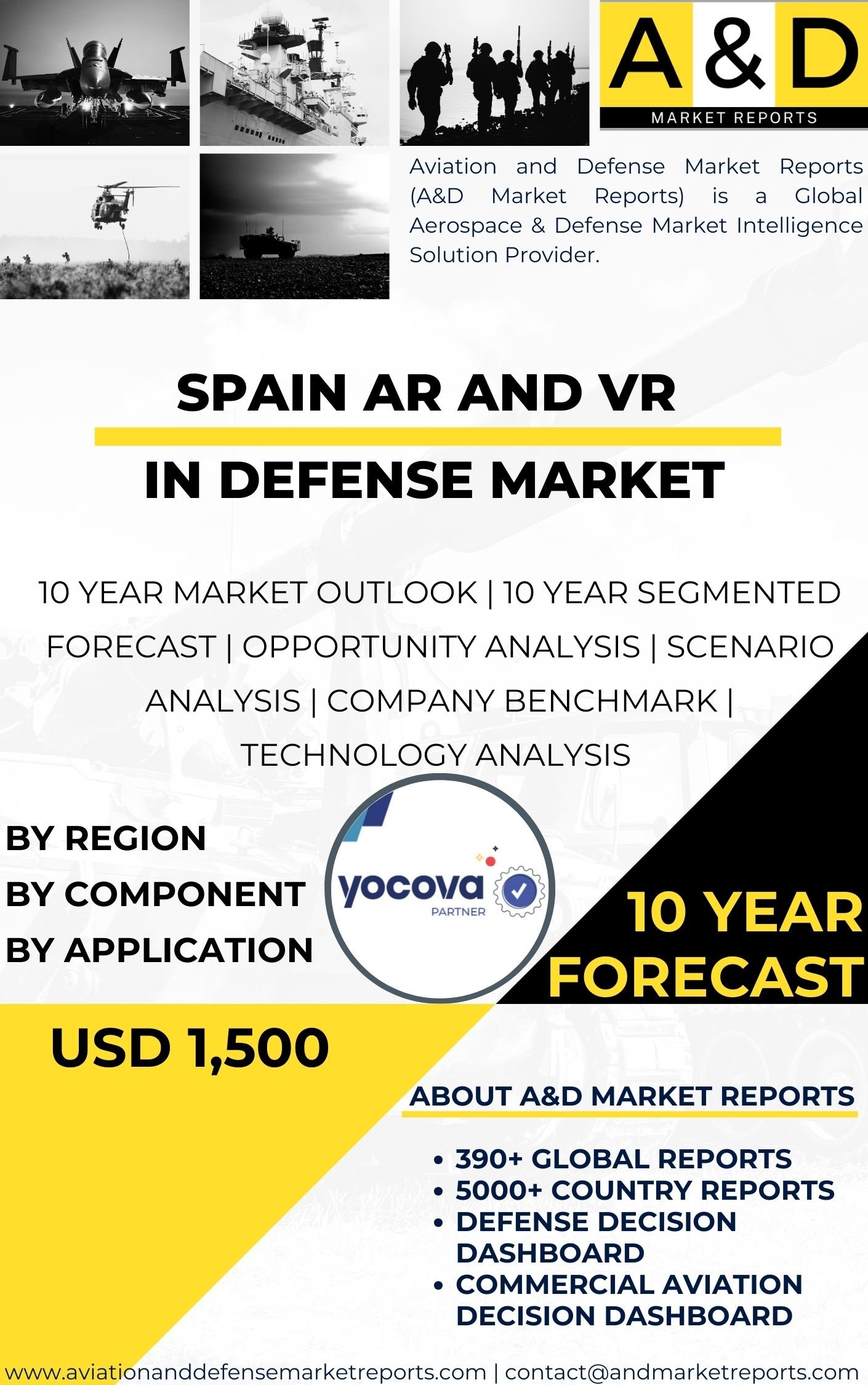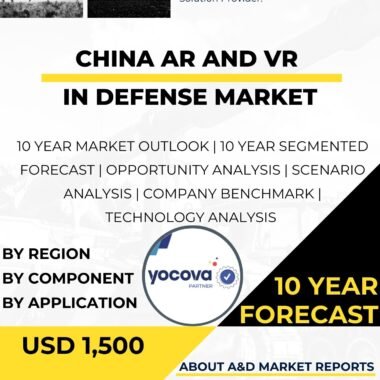Description
Spain AR & VR in Defense Market
Spain AR & VR in Defense Market have rapidly evolved, revolutionizing various industries, including defense. Spain, as a member of NATO and an active participant in international security efforts, is keen on leveraging AR and VR to enhance training, simulation, mission planning, and situational awareness for its armed forces. In this article, we will explore the current state of the AR and VR in defense market in Spain, key applications, major players, challenges, and the potential for future growth.
AR and VR technologies offer a wide array of applications in defense, transforming traditional training and operational methodologies. Some key applications include:
AR and VR platforms provide realistic and immersive training environments for military personnel, enabling them to practice various scenarios without exposing them to real-world risks.
AR and VR systems aid in mission planning, enabling military leaders to visualize and simulate complex operations and anticipate potential challenges.
AR technologies overlay digital information onto real-world environments, providing troops with enhanced situational awareness on the battlefield.
AR solutions facilitate maintenance and repair operations by offering visual guidance and step-by-step instructions, reducing downtime and enhancing equipment readiness.
Spain’s defense sector has been progressively integrating AR and VR technologies into its training and operational processes. Key aspects of the current adoption of AR and VR in defense in Spain include:
The Spanish Armed Forces are utilizing VR simulations for infantry training, flight simulation, and tactical exercises.
VR-based mission planning tools are being employed to enhance strategic decision-making and optimize resource allocation.
Spain is exploring AR applications to augment soldiers’ situational awareness on the field, providing real-time data and critical information.:
Spain collaborates with European and NATO partners in joint research and development projects to advance AR and VR capabilities for defense applications.
The AR and VR defense market in Spain involves both domestic companies and international players contributing to the development and implementation of these technologies. Some key players include:
As a major Spanish technology company, Indra provides advanced defense solutions, including AR and VR systems for training and operational purposes.The Spanish subsidiary of the multinational Thales Group contributes to the development of simulation and training solutions incorporating AR and VR technologies.
A leading Spanish shipbuilding company, Navantia explores VR applications in ship design and maritime defense.
Global defense companies, such as Lockheed Martin and Boeing, have a presence in Spain and actively contribute to the AR and VR defense market.
The AR and VR defense market in Spain is poised for significant growth, driven by various technological advancements and evolving defense requirements. Key factors contributing to future growth include:: Advancements in AR and VR technologies will lead to increased realism in training and simulation environments, providing more effective training for military personnel.
AR solutions with advanced data integration capabilities will enable troops to access critical information seamlessly, enhancing situational awareness and decision-making.
The development of lightweight and portable AR and VR devices will allow for easier integration into soldiers’ gear and enhance operational capabilities.: AR and VR technologies can be integrated into unmanned systems, enhancing remote control, situational awareness, and autonomous capabilities.
While the AR and VR defense market in Spain shows promising growth, several challenges need to be addressed for successful implementation and adoption:
The development and procurement of advanced AR and VR systems may incur high costs, potentially straining defense budgets.
Ensuring interoperability and compatibility between different AR and VR systems and platforms can be complex, especially in joint operations with international partners.
Securing AR and VR systems from potential cyber threats is crucial to prevent unauthorized access and ensure data integrity.
Successfully integrating AR and VR technologies into defense operations requires comprehensive training for military personnel and a smooth transition from traditional methodologies.
The future prospects of the AR and VR defense market in Spain remain promising, driven by the country’s commitment to modernizing its armed forces and leveraging advanced technologies for improved capabilities. Key growth drivers include:
Defense Modernization: Spain’s ongoing efforts to modernize its defense capabilities will likely result in increased adoption of AR and VR technologies.
Collaborative Initiatives: Collaborating with European and NATO partners on joint research and development projects will foster innovation and facilitate technology sharing.
International Export Opportunities: Spain’s domestic defense companies can explore export opportunities for AR and VR solutions to other nations seeking to enhance their military capabilities.
Innovations in Training: As AR and VR technologies continue to evolve, they will revolutionize training methodologies, creating more efficient, cost-effective, and realistic training environments.
The AR and VR in defense market in Spain is witnessing increasing adoption, particularly in training, simulation, mission planning, and situational awareness. Domestic companies like Indra Sistemas and Navantia, along with international defense contractors, contribute to the development and implementation of these technologies. While challenges related to cost, interoperability, cybersecurity, and training exist, technological advancements, collaborative initiatives, and defense modernization efforts pave the way for future growth in the AR and VR defense market in Spain. With continued innovation and integration into various defense applications, AR and VR technologies are set to play a significant role in enhancing Spain’s military capabilities and ensuring the safety and efficiency of its armed forces.




